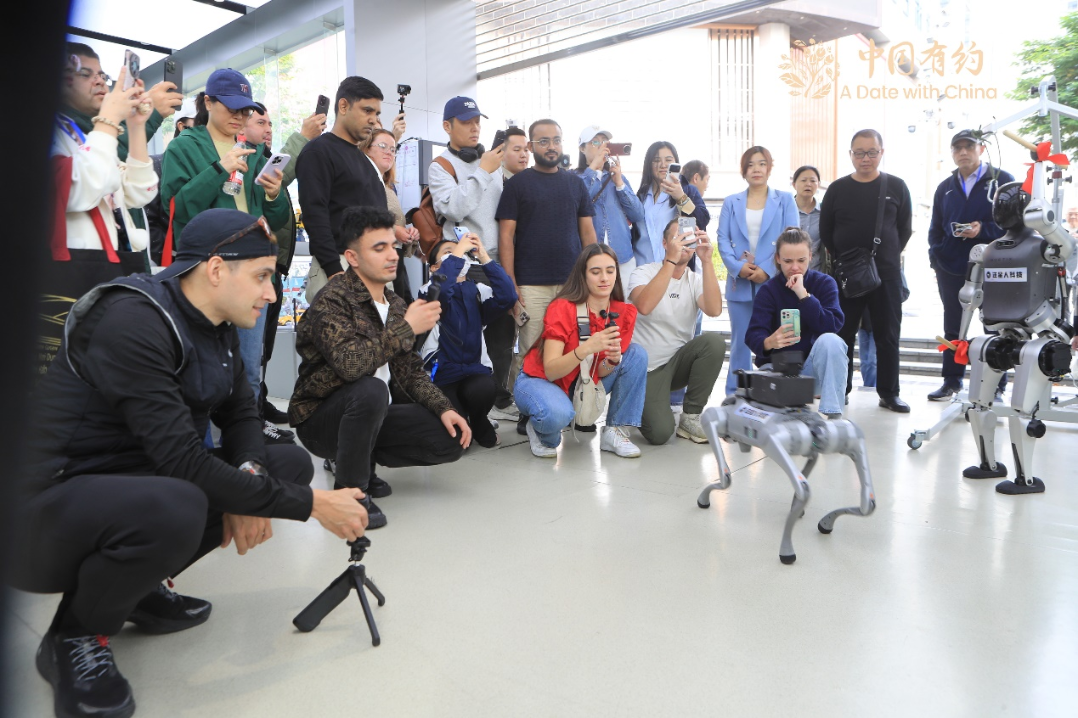Maturing Chinese market gives rise to auto culture

BEIJING-Every now and then, Li Shuang stands by the window of her office and looks out over the incessant stream of traffic on the Third Ring Road of Beijing.
The 36-year-old still remembers when cars were rare in the country.
"When I was a child, if someone drove a vehicle, he would receive others' admiration," said Li, the CEO of a cultural and creative company.
After 40 years of reform and opening-up, China has transformed itself from a land of bicycles to a global automobile market, where a wide range of car brands and models can be seen on the roads.
It has become more and more common for Chinese families to purchase a second or a third car. Automobiles have greatly extended the sphere of Chinese people's lives. But more than that, they have become a symbol of individuality.
Driving in her imported SUV Volkswagen Touareg, which cost 800,000 yuan (more than $125,000), Li Shuang has made long road trips from Beijing to Southwest China's Tibet autonomous region four times since 2014.
One night in 2015, Li encountered a huge storm on her way from Golmud to Lhasa, the regional capital.
"Without street lights, I was not sure whether my car had deviated from the planned route or not," Li recalled. "Then the car was stuck in heavy snow, which left me desperate."
Fortunately for Li, with the aid of People's Liberation Army soldiers nearby, she and her car were dragged out of the snow. From that point on, her car was more than a vehicle for her-it was a friend that accompanied her through thick and thin.
Li's story echoes the national story of China. In 1978, China started its reform and opening-up, which has enabled hundreds of millions of Chinese people to own private cars. By the end of 2016, the number of private cars in China had reached 165.59 million.
According to newly released data from the China Association of Automobile Manufacturers, China produced some 29 million automobiles last year and sold 28.9 million, ranking No 1 worldwide for nine years in a row.
"When the country has such a big amount of both auto production and consumption, it's time now to discuss the culture behind the booming industry," Li Shuang said.
According to Beijing Auto Museum, automobile culture encompasses both the material and symbolic aspects of cars. Auto culture exists when cars go beyond transportation, and influence people's lives and social development.
In 1994, China released its first automotive industry policy, encouraging private car purchases while forbidding local government sectors from intervening in people's legitimate car purchases or use through administrative or economic means.
Since then, more Chinese families have been buying their first cars. Wang Chao, president of Kaiyun Motors, acknowledged that it was still too early for China to have its own car culture.
"Customers care more about the dynamic performance, appearance and cost performance of cars," Wang said.
In China, there are vintage car collections that serve as a record of auto history and culture. "But they are a minority interest," Wang said.
China's top auto website Yiche.com received 151 million daily page views in the third quarter of 2017.
Websites and smartphone apps provide information on new car releases, price comparisons and performance evaluation, while it's hard to find channels for automobile history and culture.
Hongqi, a name that literally means red flag, is one of the best-known Chinese automobile brands. Jia Yanliang designed the shape and interior of its classic CA770 model in 1964.
The 78-year-old senior said automobile culture has passed from generation to generation. "China is seeing a lot of vehicle consumption," Jia said. "We can see traffic jams in remote county towns."
"The knowledge of brands' culture and background is still necessary for drivers if they really hope to know their cars," Jia said.
In 1958, China assigned the task of manufacturing a high-end domestic sedan to the First Automobile Works, naming it Hongqi to celebrate China's 10th National Day in 1959.
The sedan's logo featured Chairman Mao Zedong's calligraphy and a red flag. The CA77X range has been used as the National Day parade sedan and the vehicle for state guests ever since.
While designing the sedan, Jia referenced the lines and edges of Ming Dynasty (1368-1644) furniture. "Chinese traditional culture provides rich inspiration for domestic auto designers," Jia said.




































